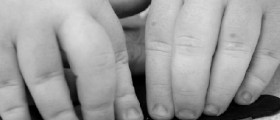
Williams syndrome is a rare neurodevelopmental disorder caused by a deletion of about 26 genes from the long arm of chromosome 7. The disease is present at birth, and it can literally affect anyone. Williams syndrome affects somewhere around 1 in 10.000 people and it is estimated that 20,000 to 30,000 people in the United States suffer from this disease. The disease is characterized by various health problems, including severe cardiovascular disease, developmental delays and learning disabilities. On the other hand, most of the affected patients have striking verbal abilities, highly social personalities and very pronounced affinity for music.
Causes of Williams syndrome
This rare condition is caused by missing genes. In many cases, patients do not have any known family history of the condition. The deletion of genetic material usually occurs randomly in about 1 in 8,000 births. A person affected by Williams syndrome has 50% chance of passing the disorder to the offspring. The loss of the ELNgene, which codes for the protein elastic, is linked with the connective-tissue deviations and cardiovascular disease. The deletion of various genes is responsible for various health and cognitive difficulties seen in Williams syndrome.
Signs and symptoms of Williams syndrome
Many children with Williams syndrome have similar facial features that include a small upturned nose, long upper lip, wide mouth, full lips, small chin, and puffiness around the eyes. Many patients have some kind of coronary or blood vessel problem. Most commonly, patients are affected by narrowing in the aorta or narrowing in the pulmonary arteries. Some children will have a high concentration of calcium in the blood. Hypocalcaemia, which is another name for this symptom, is usually characterized by the child’s extreme irritability and colic-like symptoms. Children will usually have abnormal sleep patterns and delayed acquisition of sleeping.
Children affected by Williams syndrome usually have a slightly lower birth-weight, and they will gain weight at a slower rate. Their teeth are usually small and widely spaced. These patients are also more prone to various kidney diseases. In addition, they have very low muscle tone and joint laxity. In later years, these patients usually develop joint stiffness.
Individuals with Williams syndrome normally have pronounced developmental delay, learning disabilities and attention deficit disorder. They usually need more time to learn walking, talking or how to use the toilet properly. The children are easily distracted and intellectually weak. On the other hand, these children are very communicative and very polite. Their verbal skills are outstanding, and they usually perform very well at some intellectual areas such as speech, long term memory and social skills.

















Your thoughts on this
Loading...